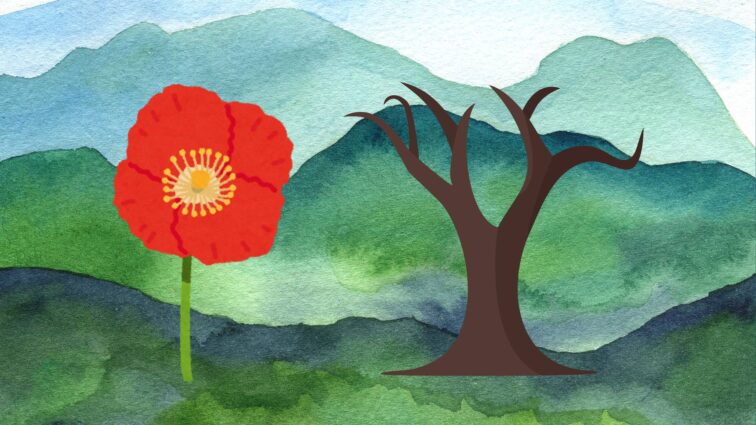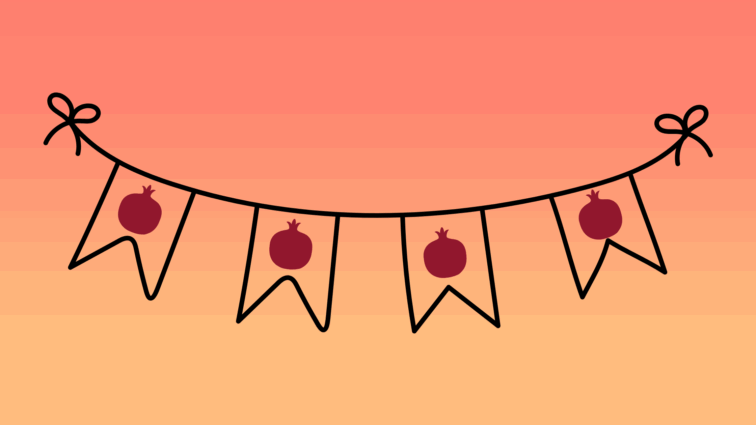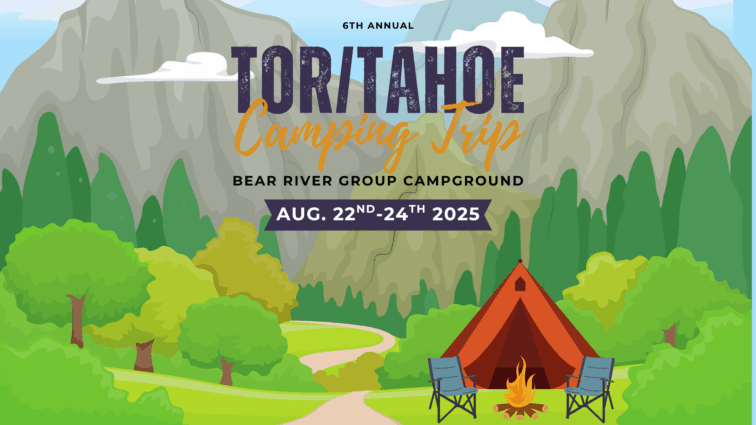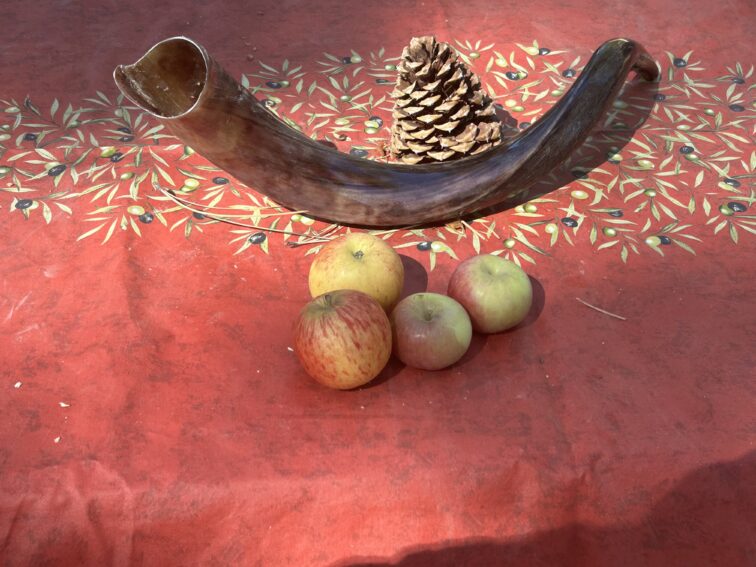The Cost of Believing the Lie
So what happens when we buy the myth that we must always be “on”? Spoiler: It’s not great.
Burnout and Compassion Fatigue
Burnout isn’t just being tired. It’s being done. It’s the kind of exhaustion that sleep doesn’t fix and coffee can’t touch. It’s emotional depletion—the slow erosion of your energy, motivation, and sense of self. It sneaks in quietly, usually after too many days of “pushing through,” until suddenly, you find yourself crying over spilled milk (literally), or feeling nothing at all when your child asks you to play. Burnout doesn’t look dramatic. Often, it just looks like someone functioning—barely—on autopilot. But underneath, the tank is empty, and they’ve been pushing the car for miles without realizing it.
Psychologists define burnout as a state of chronic physical and emotional exhaustion, often accompanied by cynicism and feelings of ineffectiveness. It was first studied in the 1970s by Herbert Freudenberger, who noticed it in healthcare workers. Today, it’s not just nurses and therapists—it’s parents, teachers, leaders, and anyone who feels responsible for other humans. Add in perfectionism, people-pleasing, and hustle culture, and you’ve got a recipe for collapse. The World Health Organization now classifies burnout as an “occupational phenomenon,” which is fancy talk for, “It’s not just in your head—it’s very real, and it’s widespread.”
Burnout is often confused with simple fatigue, but the difference is critical. Tired is “I need a nap.” Burnout is “I no longer recognize myself.” When you’re burnt out, joy disappears. Tasks that once felt meaningful feel like a burden. You become irritable, numb, and emotionally distant—not because you don’t care anymore, but because you’ve cared too much for too long without enough recovery in between. Compassion fatigue, a cousin of burnout, often affects caregivers and helpers. It’s what happens when your empathy becomes so overextended that it turns into emotional shutdown.3
The worst part? Burnout rarely sends a calendar invite. It doesn’t give you a heads-up. It builds slowly through overcommitment, underrest, and the relentless pressure to stay “on.” Many people don’t realize they’re burnt out until they’ve hit the wall—hard. And then they wonder, “What’s wrong with me?” The answer? Nothing. Burnout isn’t a personal failure. It’s a human response to chronic stress without adequate support or reprieve. Recovery starts with permission to stop. To rest. To be a person again—not a machine.
Reduced Creativity
It’s one of the cruelest ironies of hustle culture: the harder we try to always be productive, the less creative we actually become. Our society loves to romanticize the grind—early mornings, late nights, color-coded calendars, and “no days off” mantras. But here’s the plot twist no one advertises on those motivational mugs: creativity doesn’t thrive in chaos. It thrives in quiet. Stillness, daydreaming, and even boredom are not indulgences—they’re ingredients for innovation.
Psychological research backs this up. A study published in the Journal of Occupational Health Psychology found that unstructured downtime—like taking a walk or letting your mind wander—is directly linked to increased creative thinking and problem-solving. In contrast, cognitive overload from constant task-switching and excessive work demands leads to what researchers call “cognitive fatigue,” a mental state that limits our ability to think flexibly or generate new ideas. Translation? When our brains are fried, our imagination goes with it.
Burnout, in this light, doesn’t just make us tired—it flattens our originality. The emotional exhaustion that defines burnout narrows our attention and dims our spark. We stop seeing possibilities and start seeing only problems. Even tasks we once approached with curiosity begin to feel like chores. Psychologist Christina Maslach, a leading expert on burnout, describes this as “reduced personal accomplishment”—the sense that your work no longer has meaning or value. And when that feeling sets in, it’s not just creativity that suffers—it’s our confidence, joy, and sense of purpose.
Stillness, on the other hand, is not laziness. It’s compost for great ideas. Don’t believe me? Ask Archimedes. Legend has it he discovered the principle of buoyancy not while scribbling in a lab, but while taking a bath. So relaxed, giving his thoughts space to wander and himself a chance to simply observe the world around him, he finally made his mathematical discovery. And got so excited about it that he leapt from the tub, and ran naked through the streets shouting “Eureka!” That first Eureka moment didn’t come from constant busy-ness—that’s brilliance born from fallow time. Think about how many creative solutions have come to you not in meetings, but in the shower, on a walk, or during a perfectly unproductive scroll through nothing in particular. Our brains need space to breathe, connect dots, and allow our unconscious to explore the weird and wonderful corridors of thought. That space doesn’t come from grinding harder. It comes from pausing. From being quiet. From letting your foot off the gas long enough to notice a different road.
In the end, if we truly want to foster innovation, we need to stop worshiping busyness and start honoring rest. Creativity doesn’t bloom in burnout—it blooms in balance. So the next time you find yourself zoning out instead of ticking another box, don’t panic. You might not be procrastinating. You might be considering the soil to plant your next big idea.
Disconnection
Over-productivity doesn’t just drain your energy—it slowly disconnects you from your own humanity. When life becomes a never-ending performance, when you’re always “on” for someone—your boss, your partner, your kids—you begin to forget who you are when no one’s watching. At first, it’s subtle. You’re a little snappier. You find yourself zoning out in conversations or resenting simple requests. Eventually, the color drains from everything. You’re not angry or even particularly sad. You’re just numb. Like you’re going through the motions of life, but emotionally, you’ve left the building.
Psychologists call this emotional exhaustion—one of the three key dimensions of burnout, along with cynicism and reduced personal accomplishment. Emotional exhaustion doesn’t mean you don’t care; it means you cared so much, for so long, with so little recovery, that your system started shutting down to protect itself. The result? You become less present in your relationships, less responsive to your own needs, and more likely to isolate—not because you want to, but because connection suddenly feels too heavy to carry.
It’s important to understand that this disconnection isn’t a character flaw—it’s a survival response. When your brain perceives chronic stress, it deprioritizes long-term emotional processing and focuses on short-term survival. This means less empathy, fewer feelings of joy, and more emotional flatness. The prefrontal cortex, responsible for self-awareness and reflection, gets hijacked by the amygdala, which is too busy screaming, “Just get through the day!” to let you feel anything else. You’re not cold—you’re depleted. And no amount of productivity hacks or inspirational quotes can refill a cup that’s bone dry.
That’s why the classic self-care line—“You can’t pour from an empty cup”—matters more than we give it credit for. A beautiful cup on the outside means nothing if there’s nothing inside it. The hard truth is that presence requires energy. Connection requires fuel. And when you’ve been pouring into everything and everyone but yourself, disconnection isn’t a failure. It’s a flashing warning light: You need rest. Not just sleep—but soul rest. Quiet, joy, boundaries, and care that isn’t performative.
So if you’re feeling detached from yourself or others, don’t shame yourself. Recognize the signs.
So What Now?
If the myth of constant bloom is a lie, what’s the truth?
The truth is this: You are inherently worthy. Period. Not because you performed well today. Not because you answered all your emails. Not because you crushed your to-do list. Just because you exist.
We need seasons of growth and seasons of rest. We need space to fall apart and be held. To unplug and remember who we are when we’re not performing. To feel our feelings instead of filtering them for public consumption.
This isn’t about abandoning goals or ambition. It’s about anchoring your identity in something deeper than output. Because you are not a machine. You’re a human being. And sometimes, the most productive thing you can do is rest.
Tapping Into Ancient Models: How Did We Rest In The Past?
Every seven years, something wild happened in ancient Israel. The farmers didn’t plant. The landowners didn’t harvest. The fields were left alone. Not because the people were lazy. Not because there was a supply chain issue. But because the land is holy and needed a rest. “Six years you may sow your field and six years you may prune your vineyard and gather in the yield. But in the seventh year, the land shall have a sabbath of complete rest, a sabbath of God” (Leviticus 25:3–4).
This time period of radical rest is called Shmita—the commandment to let the land lie fallow. To stop plowing. To cease striving. To let the soil breathe. On the surface, it’s about agriculture. But dig deeper—pun fully intended—and you’ll find a radical spiritual metaphor. Because you, dear reader, are the soil.
And you’re tired.
The Earth Knows What We Forget
Let’s start with this: soil needs rest. Push it too hard—plant crop after crop without pause—and what was once fertile becomes dust. Nutrients deplete. Structure collapses. Erosion takes hold. Sound familiar?
Turns out, soil burnout is real. Intensive farming without fallow periods or replenishment leads to decreased organic matter, weakened microbial life, and increased erosion risk. It’s why regenerative practices like cover cropping and crop rotation exist—they’re science-backed ways to mimic the natural rhythms that soil needs to thrive.
But here’s the twist: Shmita, the Torah’s mandate to let the land rest every seventh year, doesn’t mimic rest. It mandates it. Not because the soil is broken—but because it’s precious.
So, let’s ask the question plainly: What if you’re not a machine to optimize, but soil to be honored? What if your burnout isn’t a personal failure, but a sign that your soul is being over-farmed?
Science increasingly backs up what ancient wisdom intuited: human beings also need recovery cycles. Chronic stress without sufficient rest contributes to anxiety, depression, heart disease, and immune dysfunction. Like land stripped of its nutrients, a life stripped of pause eventually cracks.
When the Torah tells us to let the land rest, it’s not because the land is lazy. It’s because the land is alive. And in Jewish thought, that means something. The Torah says, “the land is Mine” (Leviticus 25:23). Which is to say—the land isn’t ours to exhaust. And neither are we.
So, maybe this is your reminder: you’re not here to be endlessly productive. You’re here to be rooted. Nourished. Alive. Even—especially—when you rest.
Mistaking Rest for Weakness
We live in a culture that’s allergic to stillness. We glorify hustle like it’s a religion. We slap gold stars on burnout and call it “drive.” Staying up until 2:00 a.m. to answer emails? That’s commitment. Taking a nap in the middle of the day? Must be nice.
But here’s the truth: exhaustion isn’t a badge of honor. It’s a warning light on the dashboard. And the ancient Jewish practice of Shmita—the sabbatical year when the land rests—calls that out with startling clarity.
Shmita doesn’t measure worth in output. It measures it in trust. It asks a radical question: Do you believe the world will keep turning even if you pause? Do you have the courage to allow yourself to slow down? Or, if you are already slowing down, do you have the ability to see that as something natural?
That’s not a small ask. Most of us, consciously or not, believe that rest must be earned. I have this problem too. Believing that you have to prove your value—check every box, answer every message, cross every item off the to-do list—before you can “deserve” a break. It’s a mindset deeply baked into Western culture, where we confuse burnout with productivity and self-worth with performance.
But both Torah and psychology tell us something different: Rest isn’t a reward. It’s a requirement.
According to psychologists Christina Maslach and Michael Leiter, pioneers in burnout research, emotional exhaustion happens when output is constantly demanded without adequate replenishment. In plain terms: You can’t keep pouring from an empty cup. Or growing tomatoes in sand.
The soil doesn’t rebel because it’s lazy. It rebels because it’s empty.
And that might be you, too. You’re not broken. You’re not weak. You’re just human—and you’re depleted.
Research backs this up. Studies on chronic stress show that without recovery time, our brains and bodies pay the price. Stress hormones like cortisol stay elevated, which messes with everything from sleep and digestion to memory and mood. In the long run, we become less productive, not more. Even short breaks—walking outside, closing your eyes for ten minutes, doing absolutely nothing—can measurably restore cognitive function and emotional regulation.
But here’s the rub: we resist it. Because resting feels like giving up. Because we’ve been told that if we’re not constantly proving our usefulness, we’re wasting time. That’s where Shmita steps in. It doesn’t whisper, it declares: “That’s enough. Let the soil lie fallow.” Not because the land is lazy—but because it’s alive. Because it matters. And so do you.
The Torah doesn’t ask us to rest because everything’s handled. It asks us to rest because we’re not meant to carry everything alone. The land is Mine, says God in Leviticus 25:23. In other words, it was never all on you to begin with.
So maybe the most courageous thing you can do isn’t to power through—but to pause. Not to prove your worth—but to honor it.
The Courage to Stop, The Radical Wisdom of Letting Go
Shmita: The Sacred Art of Doing Nothing (On Purpose)
If you’re reading this, there’s a good chance you didn’t choose rest—it chose you. Maybe your calendar cleared out unexpectedly. Maybe your job ended, or your energy collapsed, or a crisis pulled the plug on your momentum. You were moving, growing, pushing… and now, suddenly, you’re still. It feels like life pressed pause, and no one asked your permission. Welcome to Shmita.
Alternatively, if you’re reading this, there’s a good chance you have a choice—and that might be the scariest part. The busy world rushes around you and you are in the midst of realizing that this is, simply, too much. You’re standing on the edge of rest, staring into the unknown, wondering if you can really afford to slow down. Everything in you has been trained to keep going: to produce, to prove, to stay in motion. But something deeper—quieter—is nudging you toward stillness. Maybe it’s burnout whispering, “Not like this.” Maybe it’s your intuition tapping you on the shoulder. Maybe it’s just the ache of being tired all the time. You haven’t crashed yet, but you feel the strain. And now you’re wondering: What if I step back before I break down? What if I chose to pause—not as surrender, but as strength? That’s the threshold of Shmita. Scary, yes. But also sacred.
In a modern world wired for nonstop productivity, Shmita still shocks. It’s the ancient biblical practice of letting the land lie fallow every seventh year. No sowing, no reaping, no stockpiling. Imagine telling Wall Street, “Hey folks, every seventh year, we shut it all down. No market activity. No gains. Just trust.” That’s not capitalism—it’s chutzpah. But that’s the point. Shmita isn’t efficient. It’s not a better strategy for maximizing output. It’s a radical spiritual discipline. A rebellion against the tyranny of endless production. Shmita isn’t a sabbatical you earn after crushing it—it’s a rhythm that reminds you: you are not a machine.
As Rabbi Jonathan Sacks z”l wrote, “Shmita is a time to remember that the earth belongs to God, and that ultimately, we too are not owners but stewards.” That sounds poetic, sure—but it’s also deeply psychological. In a culture that links identity to productivity, being in a season of stillness—chosen or not—can feel like failure. Our society loves a comeback story, but it has little patience for the chapter where the protagonist lies in bed, stares at the ceiling, and wonders who they are without the title, the routine, the output. But what if that in-between space isn’t wasted? What if it’s sacred?
We have to start with this: you have seasons, because you’re not a robot. Human beings are biologically rhythmic. We operate on sleep cycles, hormonal cycles, brainwave cycles, attention cycles. Your energy ebbs and flows with the light, the seasons, and your internal ecology. But hustle culture doesn’t care. It wants linear output. Show up. Every day. Perform. Achieve. Repeat. Psychologist Adam Grant calls this “toxic productivity,” a mindset where our only metric of worth is what we can do and produce—even when it costs us our mental health. In that system, rest feels like a glitch. Like you’re broken. But Shmita says otherwise. Shmita says: this pause isn’t punishment—it’s part of the plan. It’s not weakness—it’s wisdom. It’s a sacred rhythm built into the design of the world.
And here’s the kicker: rest is not passive—it’s generative. Neuroscience has shown that during real rest—especially unstructured, nonlinear rest like walking in nature, daydreaming, or just spacing out—your brain activates the “default mode network,” which is linked to creativity, emotional regulation, and meaning-making. That means your brain literally heals and reorders itself when you stop pushing it. Researcher Alex Soojung-Kim Pang puts it this way: “Rest is not idleness. It’s not a waste of time. It’s an essential investment in the present and future productivity of our minds and bodies.”
And that’s not just a cool science fact—it’s a spiritual permission slip. It means that what looks like unproductive time on the surface might actually be where the deepest integration is happening. The composting. The realignment. The quiet re-seeding of your next chapter.
But maybe the hardest truth—and the most healing—is this: you don’t have to earn your right to breathe. Shmita doesn’t wait until the soil is exhausted before commanding rest. It doesn’t say, “Take a break once you’ve proven your worth.” It says: Every seventh year, you stop. Period. That’s hard for many of us to swallow. Especially if we were raised in families or systems that equated busyness with value. Especially if we’ve internalized the belief that we need to do in order to be enough. But rest isn’t something you earn through exhaustion. It’s something you receive because you’re human.
As Brené Brown reminds us, “You either walk inside your story and own it, or you stand outside your story and hustle for your worthiness.” Shmita invites you back inside. Back into your story. Not the one where you’re constantly overcoming or impressing or achieving. But the one where you are sacred simply because you are. Shmita says: You’re already worthy. Even now. Especially now.
So if you find yourself in a forced pause, a not-quite-sure-what’s-next moment—maybe it’s not a detour. Maybe it’s a fallow season, your very own Shmita. Maybe it’s not a breakdown. Maybe it’s a sacred interruption. An invitation to trust that your life is fertile, even if it doesn’t look productive. That you are growing in invisible ways. That lying fallow is not falling apart—it’s lying in wait.
You’re not behind. You’re not broken. You’re soil. Living, breathing, sacred soil. And just like the land, you need seasons to renew. Not after you’ve earned them. Now. Hopefully, before burnout and before utter depletion. Because this pause isn’t the end of your story—it’s the transition to a different chapter. One where the plot twist isn’t more hustle, but deeper healing. One where rest isn’t retreat, but revelation.
Because not all growth looks like hustle. Sometimes it looks like stillness. Like compost on soil. Like Shmita.
Words that Resonate: What speaks to you?: Rabbi Lauren would love to hear your feedback as she continues to explore longform writing. Share your thoughts here
Learn More About the Upcoming Women’s Retreat Here
8. Maslach, C., & Leiter, M. P. (2016). Understanding the burnout experience: Recent research and its implications for psychiatry. World Psychiatry, 15(2), 103–111. https://doi.org/10.1002/wps.20311
9. World Health Organization. (2019). Burn-out an “occupational phenomenon”: International Classification of Diseases. https://www.who.int/news/item/28-05-2019-burn-out-an-occupational-phenomenon-international-classification-of-diseases
10. Figley, C. R. (1995). Compassion Fatigue: Coping with Secondary Traumatic Stress Disorder in Those Who Treat the Traumatized. New York: Brunner/Mazel.
11. Sonnentag, S. (2012). Psychological detachment from work during leisure time: The benefits of mentally disengaging from work. Current Directions in Psychological Science, 21(2), 114–118. https://doi.org/10.1177/0963721411434979
12. Kaplan, S., & Berman, M. G. (2010). Directed attention as a common resource for executive functioning and self-regulation. Perspectives on Psychological Science, 5(1), 43–57. https://doi.org/10.1177/1745691609356784
13. Maslach, C., Schaufeli, W. B., & Leiter, M. P. (2001). Job burnout. Annual Review of Psychology, 52, 397–422. https://doi.org/10.1146/annurev.psych.52.1.397
14. Maslach, C., Schaufeli, W. B., & Leiter, M. P. (2001). Job burnout. Annual Review of Psychology, 52, 397–422. https://doi.org/10.1146/annurev.psych.52.1.397
15. McEwen, B. S. (2007). Physiology and neurobiology of stress and adaptation: Central role of the brain. Physiological Reviews, 87(3), 873–904. https://doi.org/10.1152/physrev.00041.2006
16. FAO. Status of the World’s Soil Resources: Main Report. Food and Agriculture Organization of the United Nations, 2015.Lal, Rattan. “Soil degradation as a reason for inadequate human nutrition.” Food Security 1 (2009): 45–57. https://doi.org/10.1016/j.agee.2008.08.008
17. Kladivko, E. J. “Tillage systems and soil ecology.” Soil and Tillage Research 61.1–2 (2001): 61–76. https://doi.org/10.1016/S1161-0301(00)00100-4
18. McEwen, Bruce S. “Protective and damaging effects of stress mediators: central role of the brain.” Dialogues in Clinical Neuroscience 8, no. 4 (2006): 367–381.Porges, Stephen W. “The polyvagal theory: Neurophysiological foundations of emotions, attachment, communication, and self-regulation.” Dialogues in Clinical Neuroscience 17 (2011): 263–280.
19. The Torah, Leviticus 25:23 — “The land shall not be sold permanently, for the land is Mine; for you are strangers and sojourners with Me.”
20. Brown, Brené. The Gifts of Imperfection: Let Go of Who You Think You’re Supposed to Be and Embrace Who You Are. Hazelden Publishing, 2010. See also: American Psychological Association. “Work, Stress, and Health & Socioeconomic Status.” https://www.apa.org/pi/ses/resources/publications/work-stress-health
21. Maslach, Christina, and Michael P. Leiter. The Truth About Burnout: How Organizations Cause Personal Stress and What to Do About It. Jossey-Bass, 1997.
22. McEwen, Bruce S. “Protective and Damaging Effects of Stress Mediators: Central Role of the Brain.” Dialogues in Clinical Neuroscience 8.4 (2006): 367–381. https://www.ncbi.nlm.nih.gov/pmc/articles/PMC3181832/
23. Berman, Marc G., et al. “The Cognitive Benefits of Interacting with Nature.” Psychological Science 19.12 (2008): 1207–1212. https://doi.org/10.1111/j.1467-9280.2008.02225.x
24. Rabbi Jonathan Sacks. The Dignity of Difference: How to Avoid the Clash of Civilizations. Continuum, 2002.
25. Foster, Russell G., and Leon Kreitzman. Rhythms of Life: The Biological Clocks that Control the Daily Lives of Every Living Thing. Profile Books, 2004.
26. Grant, Adam. “There’s a Name for the Blah You’re Feeling: It’s Called Languishing.” The New York Times, 2021.
27. Raichle, Marcus E. “The Brain’s Default Mode Network.” Annual Review of Neuroscience, vol. 38, 2015, pp. 433–47.
28. Pang, Alex Soojung-Kim. Rest: Why You Get More Done When You Work Less. Basic Books, 2016.
29. Brown, Brené. The Gifts of Imperfection. Hazelden Publishing, 2010






